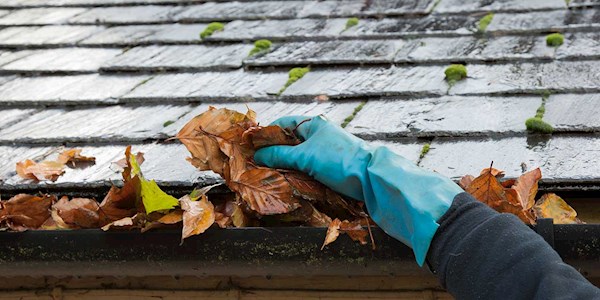
As a result, businesses must prioritise risk management in outdoor and indoor areas to ensure employee and customer safety while guaranteeing business continuity.
As the calendar shifts from summer to autumn and winter, weather patterns such as heavy rain, snow, and plummeting temperatures can let loose a number of challenges that threaten physical infrastructure and business continuity.
Proactive preparation for such challenges is pivotal. Identifying physical property risks and implementing thorough plans to fortify the premises from harsh weather challenges will not only protect your staff and customers, but also help reduce liability claims.
So how do you make a business premise resilient in the autumn and winter months – and how do you decide what is worth protecting against?
It is all about preparation.
Identify the risk
Wet weather can contribute to the risk of slips, trips, and falls, especially in high-risk areas such as carparks, steps, ramps, and walks, which is exacerbated by lower levels of light during darker mornings and nights. Furthermore, once winter sets in, the freezing temperatures and icy conditions create more problems - from health and safety challenges to structural risks.
Prepare for the risk
Outdoor spaces require careful planning to cope with darker frosty days. From installing effective heating solutions to strengthening structures against potential flooding and snow accumulation, every aspect of maintaining safety standards is critical. Similarly, meticulous inspections of indoor locations like balanced air ventilation, adequate temperature, and planning of emergency procedures are required to contribute to a safe and appealing interior environment.
Mitigate the risk and be season-ready for business continuity
Besides considering severe health hazards like flu or COVID that tend to peak during colder days, an all-encompassing strategy is required to safeguard premises and guarantee business continuity. Here are the critical points to consider.
Outdoor preparations:
- Lighting: To improve visibility on shorter, darker days, ensure enough illumination of outdoor places such as car parks and pathways while looking out for malfunctioning lights.
- Heating solutions: Install outside heaters strategically in seating areas to offer visitors and employees comfort and a warm and welcoming ambience.
- Roof and gutters: Clogged with leaves and snow, ill maintenance of roof and gutters can cause structural damage. Clear gutters to prevent drain blockage from leaves followed by water accumulation and inspect roofs for any loose tiles and leaks that causes slip hazards from the snow.
- Pipe insulation: Keeping water pipes insulated reduces the risk of freezing when temperatures fall below zero. By expanding, frozen pipes may also pose a flood risk.
- Flood defences: If heavy rain is expected, maintain facilities for fast deployment of security, such as placing flood barriers or sandbags.
- Walkway maintenance: Regularly clear fallen leaves, ice, and snow from walkways to avoid slips and falls. To improve traction, apply anti-slip treatments on surfaces.
- Fencing and signage: Check fences for stability and reinforce them if necessary. Install prominent signage to identify safe walking paths, emergency exits, and potential hazards.
Indoor preparations:
- Safe working temperatures: Although there is no legal minimum temperature for a workplace, the HSE's approved code of practice recommends that the temperature be at least 16 degrees Celsius2.
- Heating systems and boilers: Heating systems such as radiators and boilers must be operational to ensure sufficient insulation when the temperature decreases. Regular inspections help to prevent malfunctions and keep the inside temperature tolerable.
- Ventilation: While maintaining warmth, balance heating with adequate ventilation to allow fresh air movement, lowering the risk of poor indoor air quality.
- Power outage: Ensure emergency lighting systems are operational, particularly during a power loss. Make certain that exit signs are well-lit and visible.
- Floor inspection: Place absorbent mats near doorways to prevent water and dirt from being carried into the building by foot to reduce slip dangers.
- Fire safety measures: Examine the operation of fire extinguishers, alarms, and sprinkler systems. Conduct fire drills, educate personnel on emergency procedures, and contact information.
- Emergency supplies: Stock up on necessities such as blankets, bottled water, and non-perishable food items in case of encountering weather-related disruptions.
Closing thoughts
In anticipation of the impending autumn and winter seasons, all businesses must emphasise the paramount importance of strategically preparing their premises. By embracing a proactive approach to workplace safety, businesses will not only protect their staff and customers, but also help to reduce claims and ensure business continuity.
Let's talk
To speak with a member of our friendly risk management team about any of the content in this article or how we can help you with your health and safety requirements, call 0800 138 7538.

